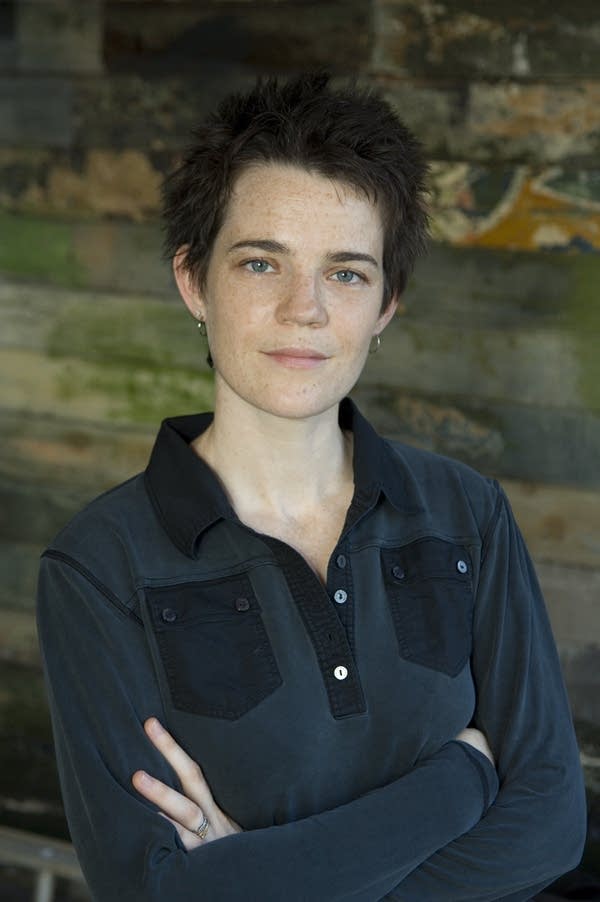Imagine prone restraint being used on your child

Haddayr Copley-Woods, Minneapolis, is a copywriter, blogger and mother. She is a source in MPR News' Public Insight Network.
Although 15 states across the country have outlawed the practice of prone restraint in classrooms, the Minnesota House recently put forth a bill recommending the continuation of this controversial form of restraint for another year. For more study. As if the "data gathering" here did not involve practicing a potentially dangerous hold on small children to see what happens.
This, despite evidence that in rare cases prone restraint has killed children. This, despite a report from the Department of Education that prone restraint is used only on kids receiving special education services. Despite the evidence that although only 13 percent of kids in special ed are African-American, 44 percent of the incidents of prone restraint involved African-American kids. And despite the data that this extreme form of restraint is not restricted to large teenagers, but is primarily used on 10-year-olds.

Advocates for continuing this practice make statements that sound as if there were no alternative — as if the only choices in dealing with an out-of-control child were either prone restraint or nothing. That's a false choice. Kids are restrained in public schools every day: Aides break up fights. A teacher grabs a kid about to run out into traffic. An autistic kid melting down is carried out of the classroom into a safer, quieter place to calm down. Safely. Naturally. Gently.
Create a More Connected Minnesota
MPR News is your trusted resource for the news you need. With your support, MPR News brings accessible, courageous journalism and authentic conversation to everyone - free of paywalls and barriers. Your gift makes a difference.
Even my own kid, who is autistic, believes that when he was younger there were times when he was overwhelmed and needed to be restrained in school. But this sort of extreme restraint is absolutely terrifying overkill.
To see what prone restraint is, look at the picture at the top of this article.
Look at this calm scene. Look at this language. "The child's arms and legs are held ... while child lies on his/her front... ." How do you think the child gets down there? Do you think that in the middle of a meltdown, a child who is autistic, or is emotionally or behaviorally disturbed, calmly lies down on his stomach? Do you think the adults are able to hold their hands lightly and comfortably on the arms and ankles?
Do you believe that if you were an angry, frightened, flailing 10-year-old, held in this position by people far larger and stronger than you, the result would be that you calmed down?
I decided to ask an autistic 10-year-old myself, and my son kindly submitted to this hold while in an already calm and agreeable state, much like the image above.
As I held his arms and his father held his ankles, I asked Arie how he thought he might feel if he were very upset and someone were holding him like this. He thought about it, and then spoke, his voice muffled by the floor. "Like a lesser being," he said. "Like an animal."
And this, my people, is the crux of my theory as to why our Legislature, our school districts, and even our Department of Education are allowing a practice to continue that has been shown to be not only potentially dangerous, but also applied wildly disproportionately to disabled African-American kids.
I think those who authorize this type of restraint see the affected kids as lesser beings.
Well, I'll tell you what I see: my own kid. My own tiny 10-year-old kid, crying and humiliated, furious and frightened, smashed down on his face on the floor and held there by two large adults — sometimes for as long as 20 minutes.
It is an ugly theory, and I hope that I am wrong. But how is it that someone can see this image and think this is appropriate to do to a 10-year-old?
I'll tell you how they can think it's appropriate: If they see these kids as "other." As dangerous and frightening. As lesser beings.
This is my kid you are talking about, you calm and reasonable advocates for prone restraint. My beautiful, brilliant, maddening, precious kid. He is not an animal, and neither are his African-American classmates. He is not a lesser being, deserving of harsher, different treatment. He is just a kid.
